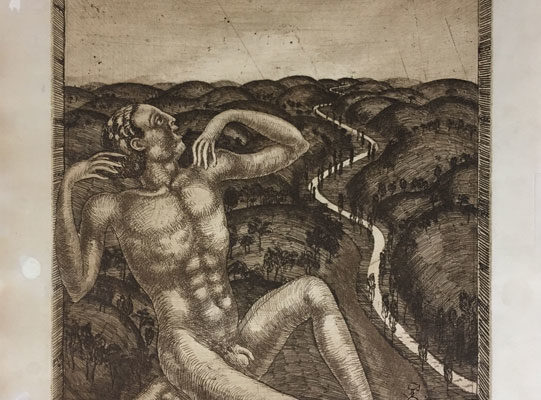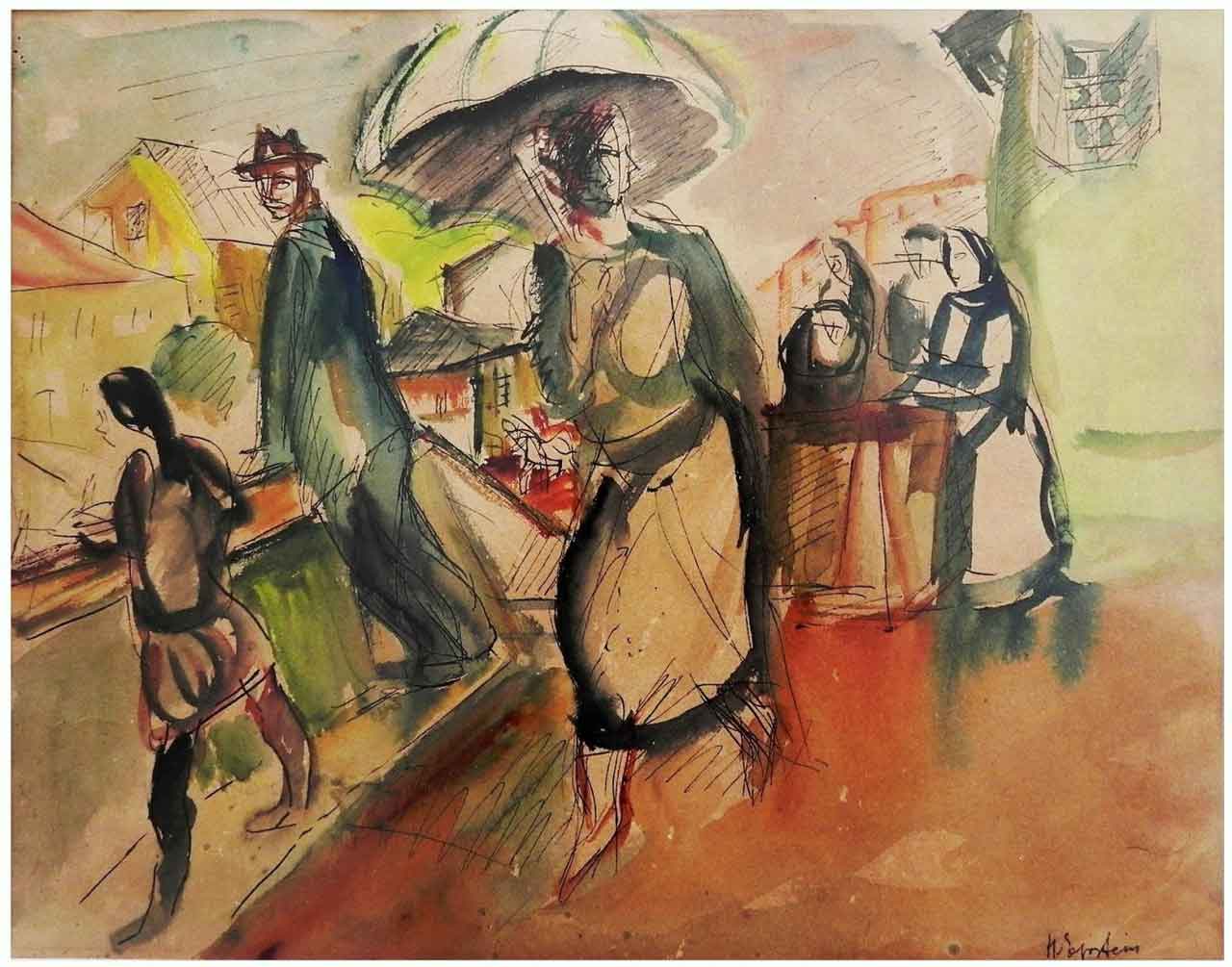The enchanted Apple. An intimate interpretation of the Belle Epoque and Art Nouveau, of Symbols and of Grotesque. A forgotten memory.
Viktor Baumgartner / Otto Bauriedl / Franz von Bayros / Karl Bickel / Giovanni Boldini / Marcelle Cahn / Lovis Corinth / Ignaz Epper / Henri Epstein / Karl Hänny / Walter Helbig / Karl Jakob Hirsch / Hermann Huber / Reinhold Rudolf Junghanns / Béla Kádár / Silvestro Lega / Ephraim Moses Lilien / Henny Mannheimer / Hans von Marées-Clemens von Pausinger / Octave Ulysse Matthey / Fritz Pauli / Gregor Rabinovitch / Klaus Richter / Lodewijk Schelfhout / Johannes Robert Schürch / Alfred Soder / Paul Speck / Jakob Steinhardt / Hermann Struck / Hans Trudel / Heinrich Ludolf Verworner / Emil Weber / August Weckesser / Friedrich August Weinzheimer / Ovide Yencesse
10 September - 17 December 2023
THE ENCHANTED APPLE. AN INTIMATE INTERPRETATION OF THE BELLE ÉPOQUE AND ART NOUVEAU, OF SYMBOLS AND OF GROTESQUE. A FORGOTTEN MEMORY is the last exhibition in the 2023 season, which also sets the seal on a period of nearly thirty years of activity, in which the MACT/CACT has developed a methodology of its own in the field of research between modernity and tradition, with a special focus on research.
THE ENCHANTED APPLE closes, almost as though it were a last will and testament, and in the process moves away from, what now belongs to the post-contemporary, i.e. the present tense, where history and stories are mixed together in confusion and society’s outlines become increasingly transient and blurred. One of the aims of this exhibition is to make its way through that history, like a fog that never lifts, partly for laziness and partly for forgetfulness. More specifically, we have considered the period at the turn of the nineteenth to the twentieth centuries, delving into the complications of the fragility that these days, like then, would be and was mistaken for weakness.
The offspring of the will to trace a moment in time, sometimes tragic in its vigorously creative, cathartic pinnacle, that started approximately with the Belle Époque and lasted until it glanced on Art Nouveau, this prototype of an exhibition nevertheless describes an itinerary compatible with the curators’ intention to reveal every nuance in this difficult, enigmatic slice of time, regardless of stylistic conventions and dates, regardless of who has remained and who has been forgotten, in a precarious balance between the demise of the old aristocracies and the Utopias of republicanism. Contemporary society bore witness to the slow, decadent fall of the crowned heads, perceiving republican ideas as a change of political paradigm and a reshuffling of social classes, penetrating, undergoing and giving birth to such unpredicted and unpredictable processes of cultural identification as to generate situations in the field of the arts of a level as high for research as they were terrible from a political and social standpoint, such as the advent of National Socialism and, a little earlier, of Soviet Communism, despite the fact that the two were seen from different angles.
It was perched on that delicate balance between old and new, between rigid social conventions and the desires of a new century, that it was possible to perceive the distress of a society with its mind set on change: with politics, the art of life and new existential reforms. Important processes in the interpretation of society and of culture got under way, following on the development of markets and of industrialisation and on the concept of technological modernity, while the avant-gardes themselves, the first pregnant political ideologies, together with the socio-analytical approach to the arts, developed an audacious new form of their own. The concept of travel became fundamental in this (late) romantic period, while the twentieth century, with its global impetus, seemed to want to shrug off the trimmings of an aristocracy that appeared to be an obsolete and decadent aristocracy, but had firmly-entrenched concepts of culture.
Moreover, towards the end of the nineteenth century, but above all at the beginning of the twentieth, further forms of resistance/existence took shape, such as communities and sanatoria, which viewed Lebensreform as a kind of peaceful alternative struggle in opposition to the powers-that-be and to the dominant society of the age, where the concepts of freedom and of pleasure in art and in life thrust towards new philosophical forms and conceptions, those that had not already been touched upon by a new religion’s urge to be born: from Monte Verità above Ascona to the Gemeinde Amden, and before them the major migratory movements of artists from the north towards Italy, a country bathed in light and freer in its manners, along the lines of the Freie Sicht aufs Mittelmeer and of the Wanderung. Places of healing, signs of intolerance between political reality and artistic Utopia, where the ferments of reform and resistance to the barbarity that was about to be unleashed were on the increase: places of refuge from a rigid, violent bourgeois society that soon became irritatingly glaring lights shone into a society of power that was itself changeable, anticipating the evils that were to afflict Europe in the first half of the twentieth century, culminating in the systematic destruction of races, cultures, religious minorities and social and political groups at the hand of National Socialism and of the theories of Arianism.
While at the beginning of THE ENCHANTED APPLE project, it was possible to catch a glimpse of an evolution from a strictly historiographic base, the exhibition gradually and effortlessly slipped into the concept of a ‘prototype’ of research, as a tribute to that period of time that, through subversion, gave the floor to the otherness of a society that was itself both an expression and a victim of the fragile moment of mutation.
This illustrates how the interval under examination, from 1850 to about the twenties of the last century, soon broke free of its fixed landmarks to drift towards the rediscovery of parallels obscured by the avant-gardes, remaining in silence when they were not unjustly forgotten.
The sometimes accidental recuperation of these figures on the domestic and international scene was fundamental for a better understanding of the climate, the odour and the spirit of the age, to whose ferment Switzerland was not immune and perhaps also a tribute to those who had been forgotten, which the upsurge of Fascism in the thirties and the concept of the purity of German blood did their utmost to erase, with a certain degree of success. Hence the importance of expanding research to encompass the spirit of those years, striving towards the limit that is so important for us, representing the fall of democracy, of freedom, of the cult of beauty, of vision and of humanism.
The artists chosen are merely a selection of the output of those times, expressing our attempt to illustrate their different linguistic trends, which were not always in line with the dominant avant-gardes of the day. This research unleashes the tremendous energy, fire and audacity that featured so large in the first part of the twentieth century, within political processes geared to a specific European code then being defined, where even art ended up representing a fundamental element of disturbance.
THE ENCHANTED APPLE remains an unfinished exhibition project and has no intention of being a catwalk of names already well represented in museographic documentation, but the redefinition and also the recuperation of a cross-section through a period of history constructed on the basis, first and foremost, of research into quite specific works.
THE APPLE is also a pretext for inducing us to ponder on the parallels between what has been and what is still to come.
Mario Casanova, Bellinzona, 2023.
Translated by Pete Kercher
Critical essay by Carole Haensler, director of Museo Villa dei Cedri, Bellinzona.
Henri Epstein (Łódź, 1891 or 1892 – Auschwitz, 1944), Scene of daily Life, (early 1920s). Watercolour and ink on paper, signed lower right, 27 x 34 cm. Private collection, Switzerland.
Where
MACT/CACT
Museo e Centro d’Arte Contemporanea Ticino
Via Tamaro 3, Bellinzona.
Opening hours
Friday, Saturday, Sunday
2 p.m. – 6 p.m.
Entry
CHF 6.00



